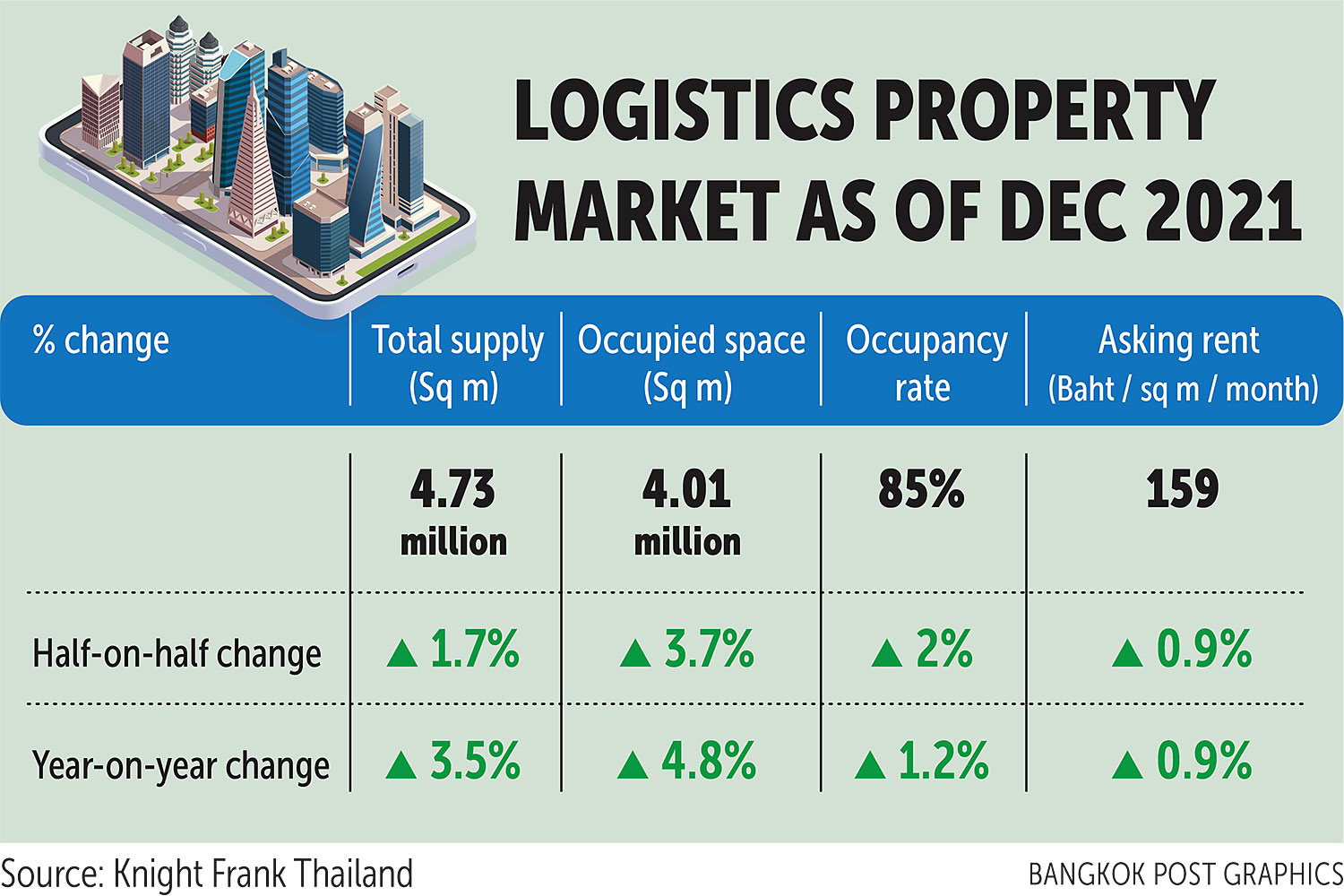Thailand: Warehouses thrive as e-commerce booms
With an improving pandemic outlook, the logistics and warehouse sector is continuing to grow, mainly attributed to robust e-commerce business and rising demand from the electronics and automotive industries following the country’s reopening.
Thanapol Sirithanachai, country chief executive of Frasers Property (Thailand) Plc (FPT), said electronics and automotive businesses were adding factory space to serve growing exports and demand, which should be boosted by an economic recovery.
“Many e-commerce and logistics firms adjusted their strategy and shifted to local warehouses,” he said. “With growing demand for built-to-suit warehouses, we delivered many projects in the first quarter and have many more to construct until year-end.”
In the first quarter of 2022, the pandemic drove demand for warehouses and logistics from both e-commerce business and short-term contracts. This demand was boosted by logistics bottlenecks, said Mr Thanapol.
FPT currently manages 1.17 million square metres of factory space and 1.92 million sq m of warehouse space, with an occupancy rate of 79% and 89% respectively, up from 76% and 86% in the same period last year.
According to property consultancy Knight Frank (Thailand), demand for modern logistics properties picked up in the second half of last year as schemes to encourage consumer spending drove growth in the logistics market.
Leasing activity returned to pre-pandemic levels, thanks to the relatively high demand driven by online retail sales and a need for extended space to mitigate supply chain disruptions.
This year’s key drivers will be e-commerce business and a rebound of manufacturing activities, said Knight Frank.
However, the Russian invasion of Ukraine has added considerable strain to global economic conditions amid Western sanctions.
A number of complex factors, ranging from rapidly rising global energy and food prices to delayed transport and container shortages, will continue to disrupt the flow of goods and services globally, said the consultancy.
E-commerce business is likely to demand even more warehouse space for express delivery services as the sector’s significance continues to grow.
The expansion of the e-commerce industry has created a demand that led to substantial changes in Thailand’s supply chain and logistics operations, said Knight Frank.
Major e-commerce and logistics companies in Thailand, including Central Group, Lazada, Shopee, Pomelo, DHL Express, Kerry Express and Aden, have established central warehouses and smaller drop-off and pick-up points across different regions to cope with the rising demand.
This has led to increased focus on logistics market expansion in Thailand, from Greater Bangkok — the main target — to other regions, based on the solid increase in app downloads from traditional retailers like Central Group, Big C and CP Group, said the consultancy.
According to Knight Frank, Thailand is a large regional export base for various industries, particularly automotive, agribusiness, chemicals and electronics. A rebound of international demand after several years of disruption will support a revival of the manufacturing sector and consequently drive demand for logistics services and warehouse space.
The Thai National Shippers’ Council forecast Thai export growth of 5% this year if the Russia-Ukraine war ends with a settlement within three months. Several industries have already felt the impact of the conflict, which has translated into higher costs for transport and consumer goods.
Issues such as a microchip shortage in the automobile industry will need to be tackled urgently to prevent a slowdown in exports, said Knight Frank. Surging food prices for products such as instant noodles and condensed milk may soon cut consumer spending power.
Automated innovations are expected to lead to omni-channel warehouses in Thailand that can take and fulfil orders from retail shops, e-commerce customers, or any other channel, as seen in more developed markets. This will create a significant competitive advantage, resulting in a wider rent spread between newer and existing local warehouse space, said Knight Frank.
In the second half of last year, warehouse take-up soared to more than 186,000 sq m, reaching a level not seen since before the pandemic.
The occupancy rate in the second half was 85%, the highest in a decade.
Source: https://www.bangkokpost.com/business/2311102/warehouses-thrive-as-e-commerce-booms


 Thailand
Thailand




